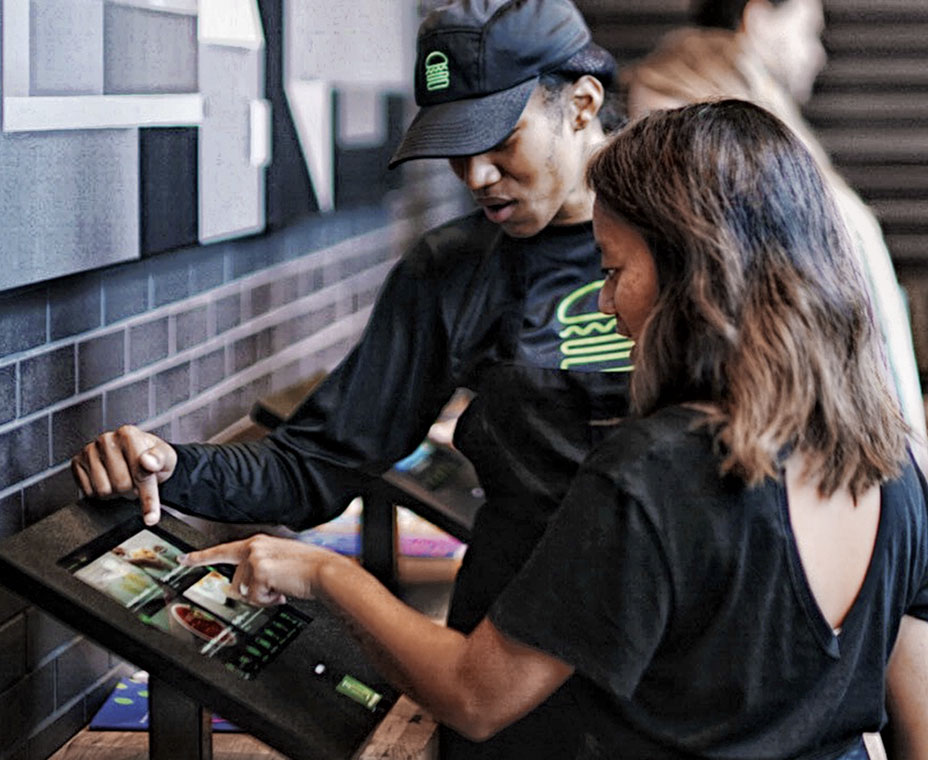Shake Shack, well known for its customer service, took a surprising step in early October when its first-ever automated, cash-less store opened in Astor Place in New York City. The new prototype features self-order kiosks and a streamlined kitchen design meant to quickly turn around orders as they come in through the kiosks, as well as takeout orders sent through Shake Shack’s online or mobile app interfaces.
The new Astor Place location could be viewed as a microcosm for a larger movement that is percolating throughout the limited-service industry. Automation has all the appeal of a shiny new tech tool, but its return on investment—especially for companies taking the first steps into the process—is still unclear.
Shortly after the new store’s opening, Shake Shack COO Zach Koff called the automated store an “early win” based on customers’ positive response. The company has no plans to open new stores with self-order kiosks, but Koff thinks Shake Shack is onto something, and it’s possible customers will eventually see more kiosks in stores. Nevertheless, he says it’s not yet clear if the store’s kiosks alone will bring in more customers.
“We wanted to make sure we’re building a space that had the ability to provide food for the number of different digital ways somebody would want to give us an order,” Koff says.
Panera Bread has already moved comfortably into the digital and automation space with its Panera 2.0 initiative. The brand emerged as an industry-leading “e-tailer,” says Janet Reinhardt, a vice president with corporate communication agency Sloane & Company, which counts Panera as a client. Thirty percent of company-wide sales come from the digital realm, which includes ordering kiosks in restaurants, as well as catering and delivery through online or mobile ordering. Other industry giants like Wendy’s and McDonald’s have already made massive investments in self-ordering kiosks at hundreds of stores.
As of mid-October, Panera had rolled out its Panera 2.0 technology to all company-owned stores and to about 40 percent of its franchise locations. The company has more than 1.3 million digital orders placed per week, and as of last June, digital sales made via mobile, web, or kiosk had surpassed $1 billion on an annualized basis, a number which could double in 2019, Reinhardt says.
“When you couple digital innovation with operational integrity, the result is a significant level of digital adoption at the guest level,” says Blaine Hurst, Panera’s president. “Our holistic approach to technology pushes us to find new ways to make a difference in the lives of guests.”
While automation at the Astor Place store may be new for Shake Shack, the brand has already witnessed success with its order-ahead cellphone application since its launch in 2016. To date, the app has been downloaded more than 350,000 times.
Earlier this year, Massachusetts-based fast casual UFood Grill took its first major step into the automation space with the addition of self-order kiosks at a location in Owings Mills, Maryland. The kiosks have a feature that sets the restaurant apart: facial recognition technology. Walter Pomerleau, vice president of franchising at UFood, says guests who have ordered using the kiosks before can (consensually) have their faces scanned to call up previous orders. Guests who use it love it, Pomerleau says, but the return on investment for the facial recognition technology—or even kiosks—is unclear. The kiosks can process orders quicker than a human cashier and are programmed to upsell additional items.
But, Pomerleau adds, UFood will never replace its human cashiers; too many customers still want face-to-face interactions when they order. Shake Shack’s Coff agrees, noting the importance of a “hospitality champion” at the Astor Place location who roams among the kiosks to offer personal assistance and conversation to customers craving that kind of interaction.
Prevailing wisdom among many in the industry is that millennials’ tastes and preferences are driving the quick-service industry toward further use of automation. According to insights from a 2016 American Express survey, the majority of customers (75 percent of those surveyed) reported that they preferred a restaurant with traditional wait staff to restaurants with minimal human customer service due to kiosks or table-ordering screens.
Still, millennials were 39 percent more likely than Gen Xers or baby boomers to prefer using those digital services. The American Express survey also polled about 500 restaurant owners and executives, finding that about 7 percent of those individuals use automated customer service tech. However, 26 percent said they were considering or planning to adopt such technologies.
Stephen Dutton, senior consumer foodservice analyst at Euromonitor International, predicts more quick-service restaurants will add kiosk and order-ahead technology as time goes on. He adds that there are ways for brands to dabble with automation before making pricey investments in kiosks. For example, some cellphone apps include order-ahead and rewards functionality that can be used by participating independent vendors.
As far as concerns about automation replacing human workers, Dutton isn’t worried. “Automation can replace certain traditional processes that were managed by human employees, but it can also create new types of work that is best managed by human employees,” he says.
In the print version of this story, “Shifting to Automatic,” we incorrectly spelled the last name of Shake Shack COO Zach Koff. We regret the error.










